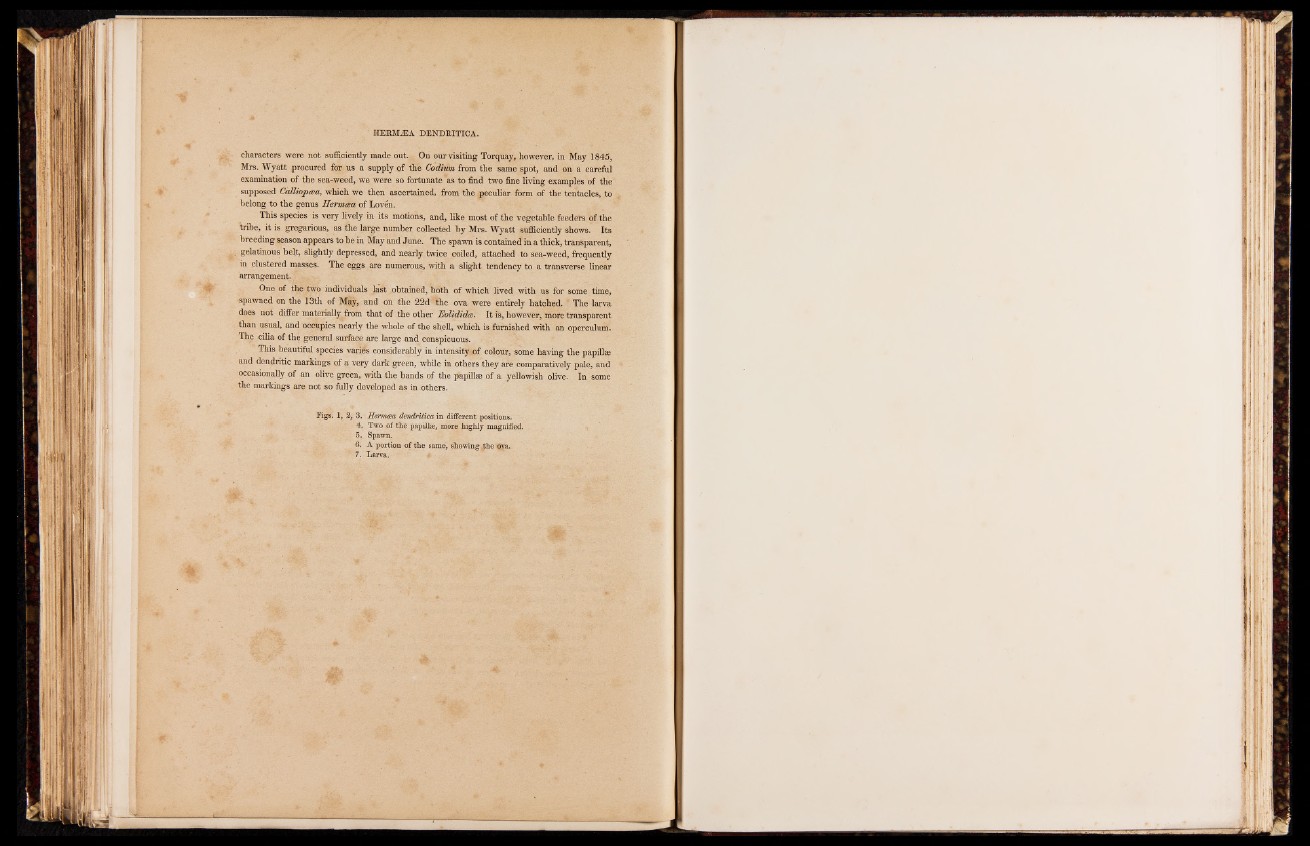
HERMÆA DENDRITICA.
characters were not sufficiently made out. On our visiting Torquay, however, in May 1845,
Mrs. Wyatt procured for us a supply of the Codium from the same spot, and on a careful
examination of the sea-weed, we were so fortunate as to find two fine living examples of the
supposed Calliopoea, which we then ascertained, from the peculiar form of the tentacles, to
belong to the genus Hermoea of Lovén.
This species is very lively in its motions, and, like most of the vegetable feeders of the
tribe, it is gregarious, as the large number collected by Mrs. Wyatt sufficiently shows. Its
breeding season appears to be in May and June. The spawn is contained in a thick, transparent,
gelatinous belt, slightly depressed, and nearly twice coiled, attached to sea-weed, frequently
in clustered masses. The eggs are numerous, with a slight tendency to a transverse linear
arrangement.
One of the two individuals last .obtained, both of which lived with us for some time,
spawned on the 13th of May, and on the 22d%he ova were entirely hatched. ' The larva
does not differ materially from that of the other Eolididce. It is, however, more transparent
than usual, and occupies nearly the whole of the shell, which is furnished with an operculum.
The cilia of the general surface are large and conspicuous.
This beautiful species variés considerably in intensity of colour, some having the papillæ
and dendritic markings of a very dark green, while in others they are comparatively pale, and
occasionally of an olive green, with the bands of the papillæ of a yellowish olive. In some
the markings are not so fully developed as in others.
Figs. 1, 2, 3. Hemuea dendritica in different positions.
4. Two of the papillæ, more highly magnified.
5. Spawn.
6-. A portion of the same, showing Ahe Oya.
7. Larva,